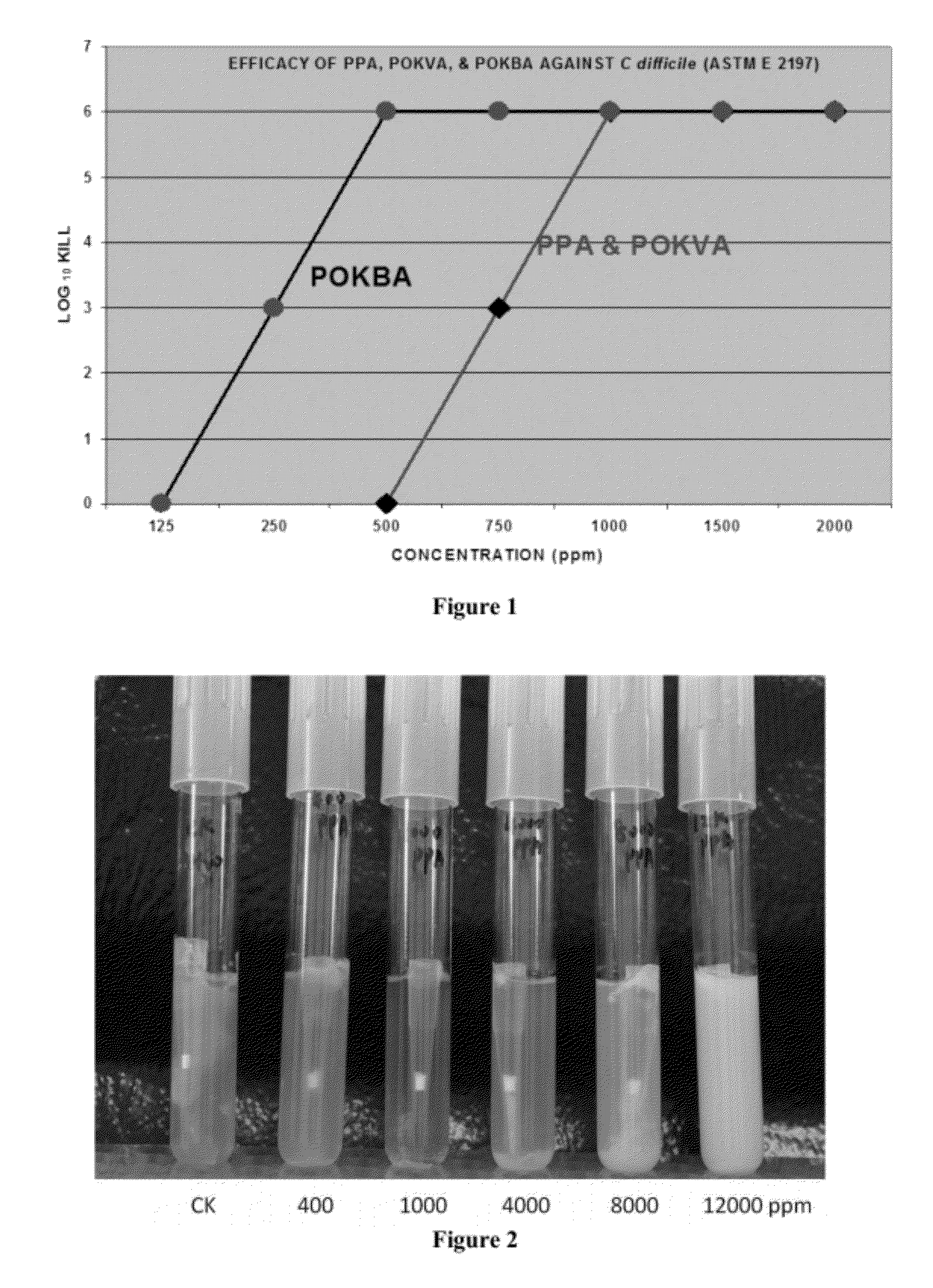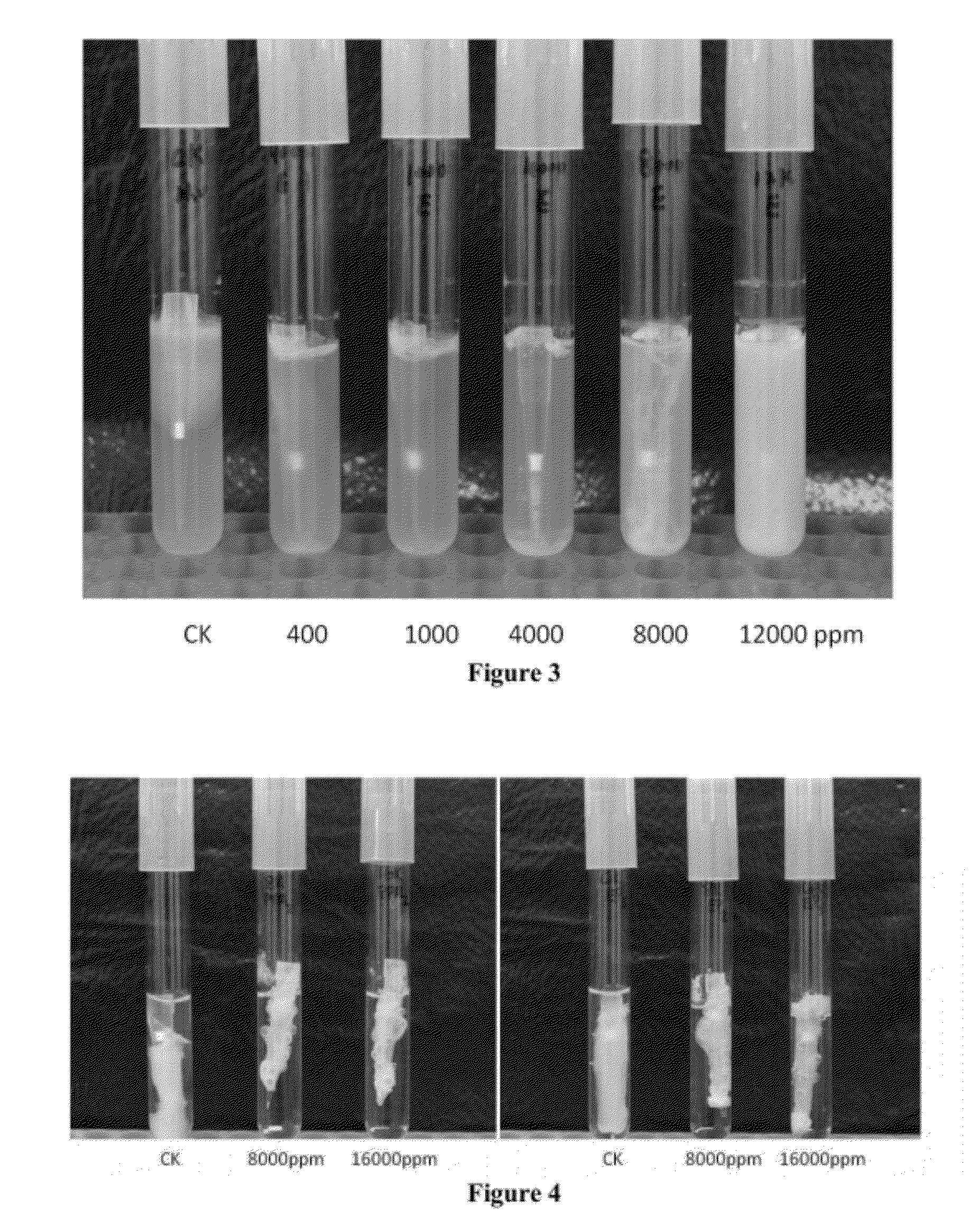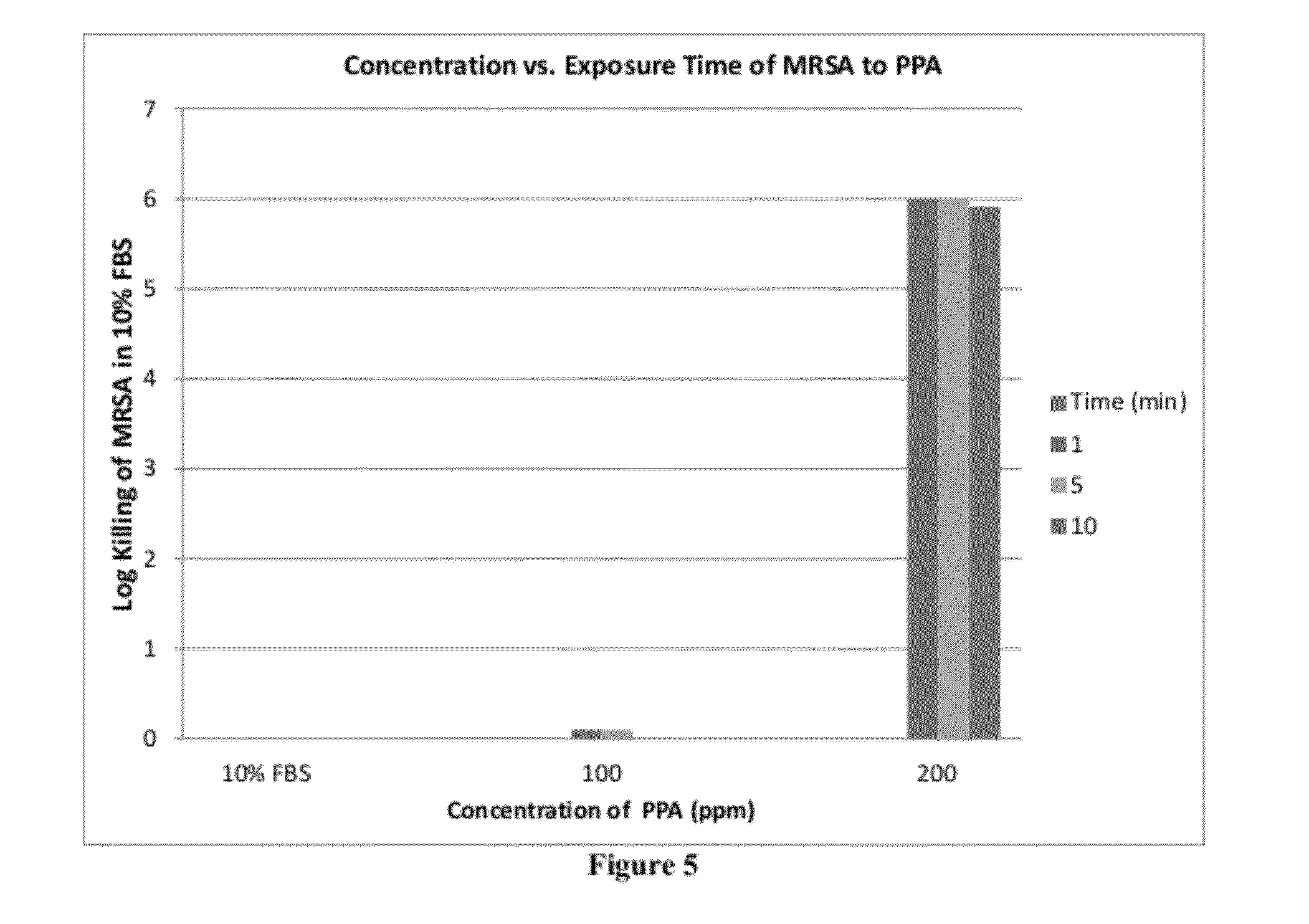Compositions Comprising Peroxy alpha-Ketocarboxylic Acid and Methods For Producing and Using the Same
a technology of ketocarboxylic acid and peroxy ketocarboxylic acid, which is applied in the direction of drug compositions, biocides, antibacterial agents, etc., can solve the problems of chronic wounds, severe morbidity, amputation or death, and impaired wound healing, so as to reduce the dry weight of biofilm, reduce the formation of biofilm, and reduce the amount of biomass
- Summary
- Abstract
- Description
- Claims
- Application Information
AI Technical Summary
Benefits of technology
Problems solved by technology
Method used
Image
Examples
example 1
Disinfection of Spores on Medical Devices
[0089]This example demonstrates that the sporicidal efficacy of the PKCA compounds in a dry, high protein environment, using the method described in the ASTM E-2197 procedure. FIG. 1 illustrates sporicidal activity of peroxy α-keto pyruvic acid (PPA), peroxy α-keto valeric acid (POKVA), and peroxy α-keto butyric acid (POKBA). Each of these solutions was challenged to kill 6 logs of C. difficile spores in 10 minutes in a high protein environment. The concentrations required were 1000 ppm (8.5 mM) for PPA and POKVA and 500 ppm (4.2 mM) for POKBA. In addition, 3 logs of C. difficile spores were killed with a PPA and POKVA at a concentration of 750 ppm (6.3 mM) and with POKBA at 250 ppm (2.1 mM). These concentrations of PKCA are equivalent to α-keto acid concentrations of 12.4 mM (1000 ppm), 9.3 mM (750 ppm), and 3.1 mM (250 ppm).
example 2
Disinfection of Biofilms on Medical Devices
[0090]The efficacy of PKCA against surface biofilm formation was tested by the AOAC 966.04 procedure. This procedure tests a candidate disinfectant against Bacillus subtillus spores dried onto ceramic penicylinders where they can form a biofilm. Briefly, a dilution of spore suspension in sterile distilled water is prepared at a final concentration equal to 1-4×107 CFU / mL. Using a sterilized hook, sterile penicylinders are placed in the prepared dilution and mixed well and then allowed to incubate for 10-15 minutes. Afterwards, the cylinders are removed, placed onto a sterilized screen in a sterile petri dish and then placed in a desiccator for at least 12-24 hours or until time of use. For disinfectant testing, the contaminated penicylinders and a non-contaminated control cylinder are placed into vials containing the PKCA mixture and allowed to set for 10 minutes. Afterwards, the number of spores are enumerated by placing a single cylinder ...
example 3
Materials and Methods
Strains and Growth Condition
[0091]Pseudomonas aeruginosa PAO1 (ATCC number: BAA-47), Enterococcus faecalis V583 (ATCC number: 700802), and Staphylococcus aureus (ATCC number: 700699) were grown in Tryptic soy broth (TSB, Sigma Chemical Co., St. Louis, Mo., USA) medium at 37° C. with shaking for 16 hr.
Chemical Treatment on Biofilm Formation
[0092]Bolton broth (Oxoid Ltd, Basingstock, Hampshire, England) and Bovine plasma (Biomeda, Foster City, Calif., USA) were used for multi-species biofilm formation. Pseudomonas aeruginosa PAO1, Enterococcus faecalis V583, and Staphylococcus aureus grown on TSB agar plates were inoculated into TSB broth and grown at 37° C. in a shaker for 16 hr. An aliquot was diluted in TSB broth to a series of dilutions for each individual bacteria type. The diluted bacteria were plated out to count colony forming units (CFU). They were further diluted to 1×106 cfu / mL. and mixed equally as inoculums. Bolton broth with 50% plasma was used for b...
PUM
| Property | Measurement | Unit |
|---|---|---|
| Cell angle | aaaaa | aaaaa |
| Area | aaaaa | aaaaa |
| Molar ratio | aaaaa | aaaaa |
Abstract
Description
Claims
Application Information
 Login to View More
Login to View More - R&D
- Intellectual Property
- Life Sciences
- Materials
- Tech Scout
- Unparalleled Data Quality
- Higher Quality Content
- 60% Fewer Hallucinations
Browse by: Latest US Patents, China's latest patents, Technical Efficacy Thesaurus, Application Domain, Technology Topic, Popular Technical Reports.
© 2025 PatSnap. All rights reserved.Legal|Privacy policy|Modern Slavery Act Transparency Statement|Sitemap|About US| Contact US: help@patsnap.com



